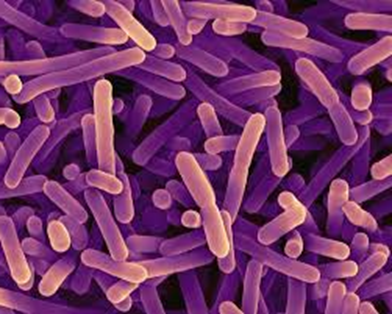Probiotics comprised of live bacteria and yeasts beneficial to your digestive system, are typically associated with harmful germs that cause illness. However, your body contains a blend of bacteria, both advantageous and detrimental. Probiotics, often termed “good” or “beneficial” bacteria, are essential for promoting gut health. They can be sourced from supplements and select foods such as yogurt, commonly advised by physicians to alleviate digestive concerns.

How Do They Work?
Researchers are currently working to understand the exact mechanisms through which probiotics function. Some potential benefits they offer include:
- Restoring lost “good” bacteria, like after antibiotic treatment.
- Balancing the ratio of “good” to “bad” bacteria, thereby supporting proper bodily function.
Types of Probiotics
Following are types:
Lactobacillus the most prevalent probiotic, is found in yogurt and fermented foods.Various strains of this offer benefits like alleviating diarrhea and aiding those with lactose intolerance, an inability to digest milk sugar.

Bifidobacterium, found in select dairy products, may help ease symptoms associated with irritable bowel syndrome (IBS) and similar conditions.

Saccharomyces boulardii a yeast present in probiotics, shows promise in combating diarrhea and other digestive ailments. Consider these factors when selecting most suitable probiotic for both men and women.

What Do They Do?
In addition to their various functions, probiotics assist in regulating gut movement by impacting the nerves responsible for digestive tract activity. Researchers are still investigating which strains are most effective for specific health concerns. Common conditions that probiotics can help manage include:
- Irritable bowel syndrome
- Inflammatory bowel disease (IBD)
- Infectious diarrhea caused by viruses, bacteria, or parasites
- Antibiotic-induced diarrhea
Furthermore, emerging research suggests that probiotics may offer benefits beyond gut health. Some people have reported improvements in:
- Skin conditions such as eczema
- Urinary and vaginal health
- Allergy prevention and colds
- Oral health
How to Use Them Safely
The FDA oversees probiotics as food products rather than medications. Unlike pharmaceuticals, manufacturers of probiotic supplements aren’t obligated to demonstrate the safety or efficacy of their products.
It’s advisable to consult your doctor before starting probiotics to ascertain if they’re suitable for you. While generally considered safe for most individuals, those with immune system issues or other serious health conditions should approach probiotics with caution.
Some users may experience mild side effects like upset stomach, diarrhea, gas, or bloating during the initial days of usage. Allergic reactions are also possible. If you encounter any adverse effects, discontinue use and seek medical advice.
How do you isolate probiotic strains?
Isolating probiotic strains involves several key steps:
1.Collecting Samples: Probiotic strains are sourced from various materials, such as fermented foods (like yogurt, kefir, or sauerkraut), human feces, or specific environments like soil.
2.Cultivation: The collected samples are cultured in specific growth media designed to foster the growth of bacteria and yeast. This step promotes the proliferation of the desired probiotic strains while suppressing unwanted microorganisms.
3.Selective Screening: Following cultivation, selective screening techniques are employed to identify colonies exhibiting probiotic traits. These traits may include resistance to acid and bile, adhesion to intestinal cells, and production of antimicrobial substances.
4.Identification: Isolated colonies undergo various biochemical and molecular tests to identify the specific probiotic strains present. These tests include techniques like Gram staining, metabolic profiling, PCR (Polymerase Chain Reaction), and DNA sequencing.
5.Characterization: Once identified, the isolated probiotic strains undergo further characterization to determine their unique properties and potential health benefits. This includes assessing their resilience to different environmental conditions, survivability during gastrointestinal transit, and therapeutic effects.
6.Scaling Up and Production: Finally, the isolated probiotic strains are cultured and expanded on a larger scale to produce probiotic supplements or fortified foods.
In summary, isolating probiotic strains is a multifaceted process that demands meticulous selection, screening, and characterization to ensure the development of safe and efficacious probiotic products.
How do you characterize probiotic strains?
Characterizing probiotic strains involves analyzing various aspects of their biology and behavior to understand their potential health benefits and applications. This comprehensive process includes:
1.Genetic Analysis: Identifying the genetic makeup of the probiotic strain using techniques like DNA sequencing to pinpoint specific genes responsible for probiotic properties and understand their evolutionary relationships.
2.Phenotypic Analysis: Examining observable characteristics such as morphology, growth rate, and metabolic activities to assess how the strain behaves under different conditions and its suitability for various applications.
3.Physiological Analysis: Evaluating physiological traits like tolerance to acidic or bile environments, resistance to antibiotics, and adherence to intestinal epithelial cells. These traits are crucial for the strain’s survival and functionality within the gastrointestinal tract.
4.Functional Analysis: Investigating the strain’s functional properties, including the production of antimicrobial compounds, modulation of immune responses, and contribution to gut microbiota balance. This helps determine its potential therapeutic effects and mechanisms of action.
5.Safety Assessment: Conducting evaluations to ensure the strain is non-pathogenic, non-toxic, and free of virulence factors. This includes testing for antibiotic resistance and allergenicity.
6.Stability Studies: Examining the strain’s stability during storage and processing to maintain viability and functionality. Factors such as temperature, humidity, and formulation are assessed.
Overall, probiotic strain characterization integrates molecular, physiological, and functional analyses to optimize their utilization for promoting human health.
